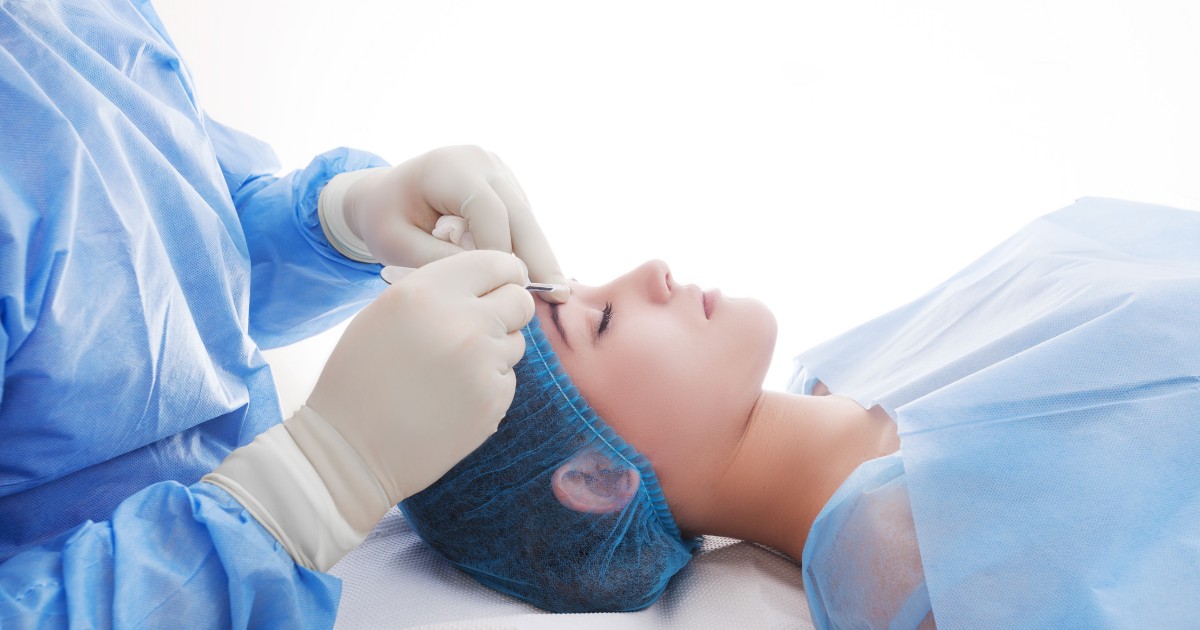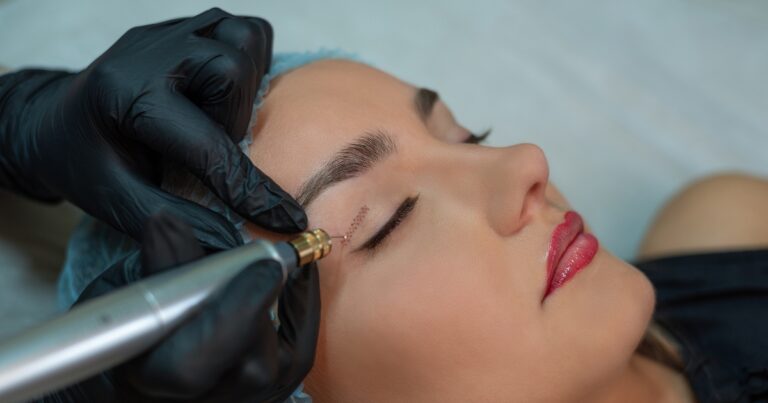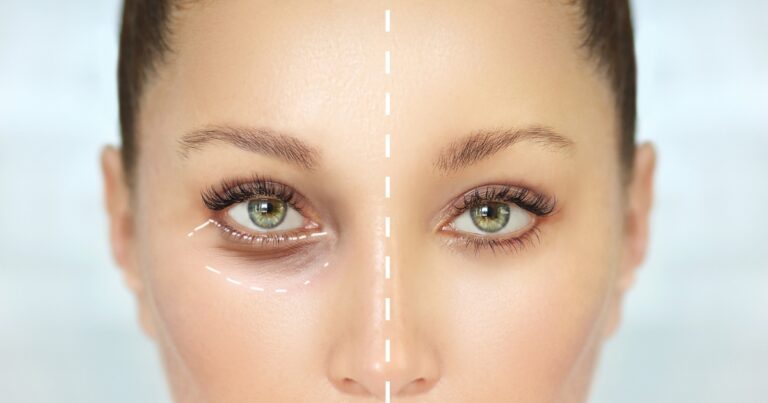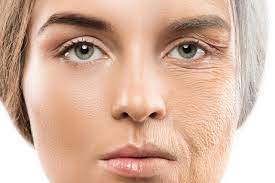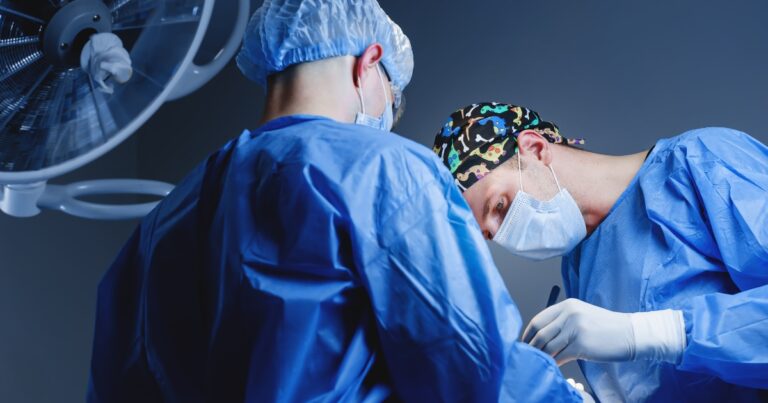If you are thinking about what is Eyelid surgery, or blepharoplasty, it is a procedure to fix sagging or drooping eyelids, often caused by age or genetics. This surgery can not only improve appearance, making the eyes look younger and more refreshed, but it can also help those who experience vision issues due to excess skin blocking their view. Whether it’s for cosmetic reasons or to improve sight, it’s a common procedure that many opt for when their eyelids start to cause problems.
For those considering eyelid surgery as a means of improving their vision or enhancing their appearance, a thorough understanding of the procedure is essential.
What is Eyelid Surgery and Who Needs Eye Lid Surgery?
In medical terms, eyelid surgery is known as blepharoplasty. This surgical procedure aims to correct imperfections, deformities, and disfigurations of the eyelids. It benefits individuals experiencing functional problems or seeking aesthetic improvements due to ageing or hereditary factors.
- Definition and Overview: Blepharoplasty is a procedure to repair droopy eyelids by removing excess skin, muscle, and fat.
- Indications for Surgery: Ideal candidates include those experiencing impaired vision due to droopy eyelids or seeking cosmetic enhancement.
- Ageing and Heredity: As people age, eyelid skin can lose elasticity and may be further impacted by genetic predisposition.
- Functional vs Cosmetic: The surgery serves dual purposes; it can enhance the appearance and improve eyelid function.
- Patient Demographics: Eyelid surgery is most common among middle-aged and older adults but may be considered by anyone with relevant concerns.
- Consultation Necessity: Prior consultation with a certified plastic surgeon is essential to determine individual needs and eligibility.
How Do You Determine If You’re a Good Candidate for Eyelid Surgery?
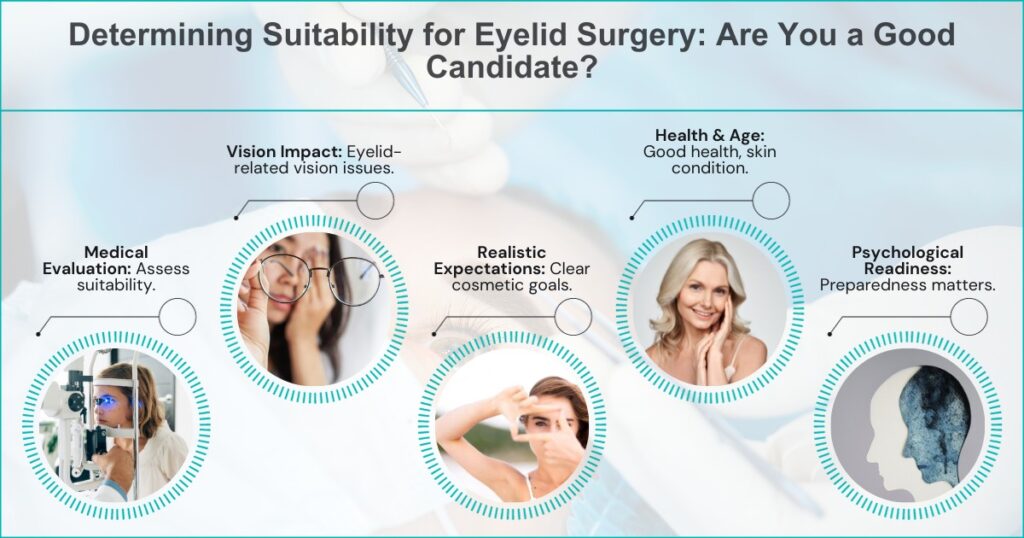
To see if you’re right for eyelid surgery, a doctor will check your health and the condition of your eyes. They’ll want to know if you have any eye problems or medical conditions. If droopy eyelids affect your vision, this surgery might be for you.
It’s also crucial that you’re in good health, don’t smoke, and have realistic hopes for the results. Your skin’s stretchiness and your age can play a role.
Lastly, you should understand the surgery and be mentally ready for it. If you’ve had eye surgeries before, it’s essential to tell your doctor because it might change things.
Book A Consultation With Dr Tarek Bayazid
Top-rated Plastic Surgeon For Eyelid Surgery in Dubai
Installment Plan Available
- Medical Evaluation: A thorough medical evaluation is critical to ascertain the suitability for surgery.
- Vision Assessment: Patients with vision impairment caused by eyelid issues may be prime candidates.
- Aesthetic Goals: Cosmetic expectations should be realistic and well communicated with the surgeon.
- Physical Health: Good candidates are generally in good physical health and non-smokers.
- Age Considerations: While there is no optimal age, skin elasticity and overall health are essential factors.
- Psychological Readiness: Understanding the procedure and having psychological readiness is crucial for a successful outcome.
- Previous Eye Conditions: Those with eye conditions or previous surgeries should discuss potential risks with their surgeon.
What Are the Different Types of Eyelid Surgeries Available?
Several eyelid surgery techniques are tailored to address upper eyelids, lower eyelids, or both, depending on the specific issues and desired outcomes.
| Surgery Type | Target Area | Primary Benefit |
| Upper Eyelid Surgery | Upper Eyelid | Corrects drooping and improves field of vision |
| Lower Eyelid Surgery | Lower Eyelid | Reduces under-eye bags and wrinkles |
| Combination Blepharoplasty | Both Upper and Lower Eyelids | Addresses multiple areas for a rejuvenated appearance |
| Transconjunctival | Inner Eyelid | Target fat without visible scars |
| Eyelid Surgery With Laser | Upper or Lower Eyelids | Minimises scarring and recovery time |
| Asian Blepharoplasty | Upper Eyelid | Creates or enhances eyelid crease |
| Revision Blepharoplasty | Previously Operated Eyelids | Corrects or improves results of a prior eyelid surgery |
The table provides an at-a-glance comparison of the different eyelid surgery techniques available, highlighting their target areas and the primary benefits they offer. This quick reference helps individuals understand their options and the specific advantages of each type of procedure.
Can Eyelid Surgery Improve Vision, and How?
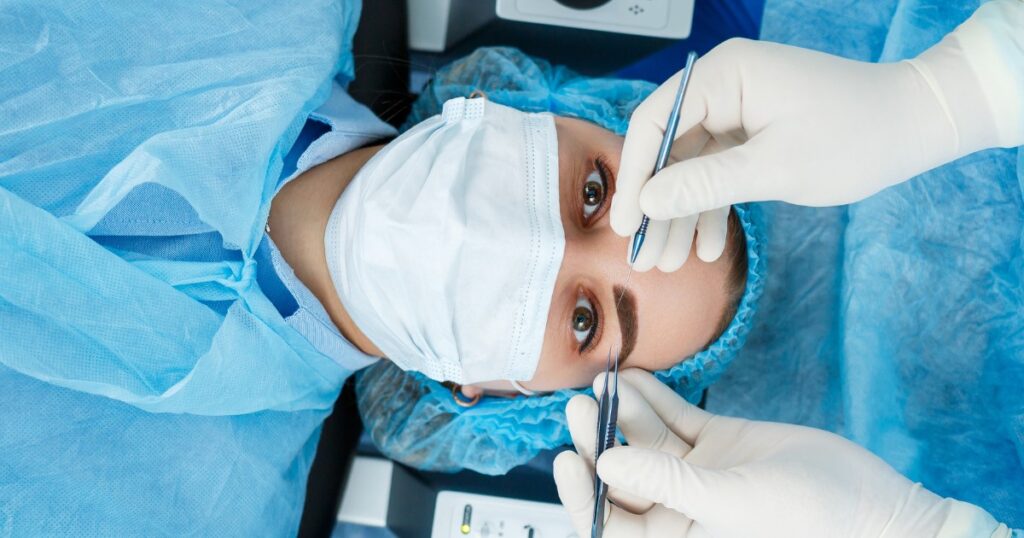
Eyelid surgery can significantly improve vision by removing the excess tissue that obstructs peripheral vision, leading to a broader field of sight and fewer vision impairments.
| Aspect | Pre-Surgery | Post-Surgery |
| Field of Vision | Possibly obstructed | Broadened significantly |
| Peripheral Vision | May be impaired | Enhanced clarity and range |
| Safety and Mobility | Could be compromised | Improved due to clearer vision |
| Eye Strain | Often present due to drooping | Alleviated, leading to less fatigue |
| Visual Field Tests | Establish a baseline for vision | Assess improvement and surgical success |
| Insurance Coverage | It may be approved for functional improvement | Determined by post-surgery assessment |
This table outlines the potential impact of eyelid surgery on vision before and after the procedure. It demonstrates how the surgery can transition a patient from impaired vision and related difficulties to improved sight and quality of life, a crucial consideration for both patients and insurers.
What Should You Expect During an Eyelid Surgery Consultation?
An initial consultation for eyelid surgery will include a comprehensive discussion about the patient’s vision, aesthetic concerns, medical history, and a detailed explanation of the procedure.
- Medical and Vision History: Comprehensive review of vision issues and medical history to ensure safe surgical planning.
- Physical Examination: Examine eyelids and eye function to determine the best surgical approach.
- : Discussion of realistic outcomes and understanding of the limitations of the procedure.
- Procedure Explanation: Detailed information on how the surgery is performed, including anaesthesia and recovery.
- Risk Disclosure: Surgeons will outline possible complications and risks of eyelid surgery.
- Photographic Documentation: Preoperative photographs are often taken to aid in planning and assessing postoperative results.
- Financial Planning: Cost, payment options, and insurance coverage will also be reviewed during the consultation.
How Is Eyelid Surgery Performed and What Techniques Are Used?
Eyelid surgery is typically an outpatient procedure using local anaesthesia with sedation, where the surgeon makes precise incisions to remove or reposition fat and excise excess skin and muscle.
- Anesthesia and Sedation: Local anaesthesia with sedation is commonly used for patient comfort.
- Incision Techniques: Incisions are made along the natural lines of the eyelids to minimise scarring.
- Fat Removal and Repositioning: Excess fat is removed or repositioned for a more natural contour.
- Muscle and Skin Excision: Loose muscle and skin are trimmed to create a tighter, more youthful appearance.
- Suture Methods: The incisions are typically closed with sutures or skin glue.
- Laser-Assisted Surgery: In some cases, lasers may enhance precision and reduce healing time.
- Individualised Approach: Each procedure is customised based on the patient’s unique anatomy and goals.
What Is the Recovery Process Like After Eyelid Surgery?
Recovery from eyelid surgery involves rest, cold compresses to reduce swelling, and careful attention to the doctor’s instructions to facilitate healing and minimise potential complications.
| Timeframe | Recovery Expectation |
| Immediate Post-Op | Bandages and initial healing |
| 1 Week | Follow-up visit for suture removal, if necessary |
| 2-4 Weeks | Major reduction in swelling and bruising |
| 1-3 Months | Continued healing and fading of scars |
| 3-6 Months | Stabilisation of results and return to normal activities |
| 1 Year | Full maturation of scars and outcome visible |
The table outlines the typical timeline and milestones that patients can expect during their recovery from eyelid surgery. It provides a framework for the healing process, from immediate post-operative care to finalising the surgical results.
What Are the Potential Risks and Complications of Eyelid Surgery?
Like any surgical procedure, eyelid surgery carries potential risks, including infection, scarring, changes in sensation, or asymmetry, which should be thoroughly discussed with a surgeon before the operation.
| Risk or Complication | Description | Prevention or Management |
| Infection | A possible risk at the incision site | Antibiotics and sterile technique |
| Hematoma | Blood pooling beneath the skin | Immediate care and monitoring |
| Scarring | Potential for visible scar formation | Precision in incision and proper wound care |
| Asymmetry | The uneven appearance between eyelids | Careful planning and surgical skill |
| Dry Eyes | Increased eye dryness post-surgery | Lubricating eye drops and monitoring |
| Vision Changes | Rare but possible changes in vision | Early detection and treatment |
| Revision Surgery | The need for additional surgery to correct issues | Choosing an experienced surgeon for the initial procedure |
This table addresses common concerns regarding the potential risks and complications associated with eyelid surgery. It outlines not only the risks themselves but also includes preventative or management strategies to mitigate these concerns, providing patients with a realistic understanding of what to expect and how complications are handled.
How Long Does It Take to See the Final Results of Eyelid Surgery?
The final results of eyelid surgery are typically seen after the complete resolution of swelling and healing of tissues, which may take several weeks to months, with incremental improvements along the way.
- Initial Healing: The first few weeks post-surgery will significantly improve as swelling and bruising decrease.
- Final Results Timeline: Final results may take several months as the tissues settle and incision lines mature.
- Patient Variability: Healing times can vary significantly between individuals.
- Follow-up assessments: Surgeons will schedule follow-up appointments to monitor progress and advise on the expected timeline for results.
- Incremental Improvements: Patients often notice gradual improvements during the healing process.
- Influence of Lifestyle: Healthy lifestyle choices can aid in a quicker recovery and more rapid appearance of final results.
- Surgeon’s Skill: The experience and skill of the surgeon play a vital role in the quality and speed of results.
Will There Be Scarring After Eyelid Surgery?
While all surgeries result in some degree of scarring, eyelid surgery is designed to minimise visible scars, with incisions typically made along the natural folds of the eyelids for concealment.
- Incision Placement: Surgeons strategically place incisions to minimise visible scarring.
- Healing and Maturation: Scars typically fade and mature over several months to a year.
- Genetic Factors: Individual healing and genetic factors can influence scar visibility.
- Postoperative Care: Following postoperative care instructions can promote better healing and less noticeable scars.
- Scar Treatments: If necessary, additional treatments are available to improve the appearance of scars.
- Surgeon’s Technique: A surgeon’s expertise can greatly affect the extent and visibility of scarring.
- Setting realistic expectations regarding scarring is an important part of pre-surgical consultations.
How Does Eyelid Surgery Affect Eye Health in the Long Term?
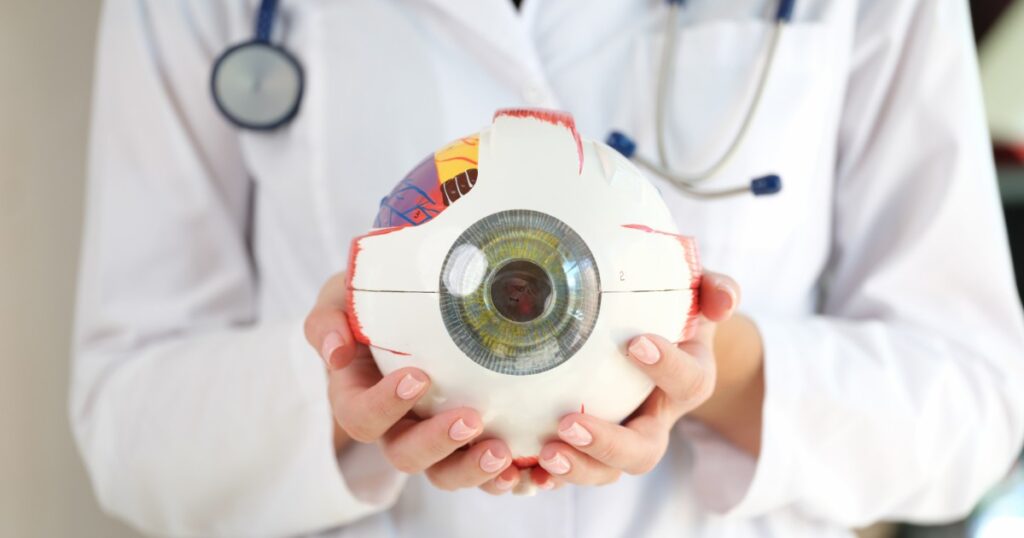
Long-term effects on eye health following eyelid surgery are generally positive, including reduced strain and improved eyelid function, with most risks being associated with the immediate postoperative period rather than long-term eye health.
| Factor | Impact | Considerations |
| Surgical Success | Can improve long-term eyelid function | Depending on the surgeon’s skill |
| Eye Strain | The reduction can decrease long-term issues | Beneficial for overall eye health |
| Natural Aging | Surgery does not halt the ageing process | Future changes in eye health are to be expected |
| Lifestyle Choices | Good habits can extend the positive effects | Includes sun protection, not smoking, and proper nutrition |
| Follow-Up Care | Necessary to monitor long-term outcomes | Regular check-ups with an eye specialist |
| Use of Eye Protection | Post-surgery care includes shielding eyes from harsh elements | Sunglasses and avoiding harsh environments are recommended |
| Dry Eye Management | Long-term dry eye symptoms may require ongoing treatment | Patients with pre-existing conditions should take extra care |
This table presents factors that influence long-term eye health following eyelid surgery. It points out the benefits of a successful surgery and the natural limitations of ageing and individual patient habits. Long-term care, protective measures, and lifestyle choices all play roles in maximising and maintaining the health benefits acquired from the surgery.
Can Eyelid Surgery Be Combined With Other Facial Procedures?
Eyelid surgery can often be combined with other facial procedures, such as brow lifts, face lifts, or skin resurfacing techniques, to achieve a more comprehensive facial rejuvenation effect.
- Comprehensive Rejuvenation: Combining procedures can address multiple concerns in one surgical session.
- Surgical Synergy: Procedures like brow lifts can complement eyelid surgery for enhanced results.
- Patient Goals: A combined approach is tailored to meet the patient’s aesthetic goals.
- Recovery Planning: Combining surgeries may affect recovery time and should be planned accordingly.
- Cost Efficiency: There may be cost benefits to combining procedures.
- Surgeon Consultation: A detailed consultation with a plastic surgeon can determine the appropriate combination of procedures.
- Procedure Sequencing: The order and timing of combined procedures are carefully planned to ensure safety and effectiveness.
Having a clear understanding of what eyelid surgery is will help you appreciate how it enhances facial aesthetics and improves ocular function. However, it’s important that in spite of its popularity, individuals must consider the risks and recovery associated with this procedure.
Dr Tarek Bayazid is renowned for his advanced facial rejuvenation techniques and for obtaining natural results. If you’re considering eyelid surgery, you can count on one of the most experienced plastic surgeons in Dubai for your eyelid surgery.
Book your consultation with Dr Tarek today and take the first step towards revitalising your look.
